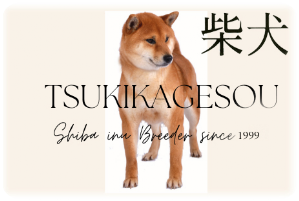curiosities about the Shiba
Shiba Inus bear a startling resemblance to foxes
1. This is an ancient breed.
The Shiba’s ancestors probably accompanied the earliest immigrants to Japan way back in 7000 B.C. Archeologists have found remains of dogs about the size of Shibas in sites that were inhabited by the Jomon-jin people, who lived in Japan from 14,500 B.C. to 300 A.D. The Shiba Inu is likely the result of breeding between the Jomon-jin’s dogs and dogs that came to Japan with a new group of immigrants in 300 B.C.
2. They were originally used as hunting dogs.
Shibas have been used for hunting both small and large game. Because they are small, they’re good at flushing birds and other small game out of the bushes. Shibas are rugged dogs that survived for thousands of years in the mountainous regions of Japan.
3. This is one of the most popular breeds in Japan.
Shibas are currently one of the most popular companion dogs in Japan, and they were declared a national treasure of the country.
4. The origin of their name is a mystery.
We know the word “inu” means dog in Japanese, but we don’t know for certain where the name “Shiba” came from. Shiba means brushwood in Japanese, so it’s possible that the Shiba Inu was named for the terrain where it hunted. It’s also possible that the name came from the Shiba’s coat, which is the same color as the autumn brushwood. A third explanation is that the name came from the breed’s size; an obsolete meaning of the word shiba is little.
5. There used to be three kinds of Shibas.
Before World War II, there were three types of Shibas — the Mino, the Sanin, and the Shinshu, named for the regions where they originated. Today’s Shiba Inu is most similar to the Shinshu, but all three contributed to the modern breed.
6. They almost became extinct.
World War II almost completely wiped out the Shiba Inu. Most died in bombing raids during the war, or from distemper, a highly contagious canine viral infection, after the war. Breeding programs that began after the war helped the breed bounce back. Most of the surviving Shibas were the Shinshu variety, though there were a few Mino and Sanin left.
7. One Shiba saved her family in an earthquake.
In 2004, an earthquake struck the village of Yamakoshi in Japan. When her family’s home collapsed, a Shiba Inu named Mari sprang into action to save her puppies and her elderly owner. She moved her puppies to a safe place and then found and woke up her owner, who had been trapped underneath a fallen cabinet. He managed to free himself and was eventually evacuated from the area by helicopter. He was forced to leave Mari and her pups behind, but when he returned two weeks later he found that they were all alive. Mari’s story was made into a Japanese movie called “A Tale of Mari and Her Three Puppies.”
8. Shibas have cat-like qualities.
In many ways, the Shiba Inu is more like a cat than a dog. They are independent and can be difficult to train. They also spend a lot of time grooming themselves and tend to be extremely clean.
9. Sometimes it can happen that cream-coloured, pinto, or long-haired Shiba inu are born
(they are not in the official standard, but for family life it is not a problem, they are not suitable for dog shows or for breeding)
10. The shiba’s fur is double-coated, which means it’s very thick—and that means a lot of shedding.
Shiba inu’s have two official “shedding seasons,” fall and spring
(now with crazy weather is more times).
Yet, owners quickly realize that shibas shed plenty throughout the year, too.
Unless you have a long-coated variety, shibas do not need regular brushing. Long-coated shibas can get matted hair when not brushed regularly, but the traditional Shiba Inu does not have this issue.
When you get around to brushing out their signature tail, be extra gentle. Although the tail looks strong, that’s mostly just because of the dense fur.
If you find yourself covered in fur constantly, brushing them out once or twice a month can help prevent the tufts from floating around your home.
One thing that helps the abundance of shedding is to give them a very occasional bath, which helps to loosen fur. An extra bath here or there can help control the amount of shedding during the high-shedding seasons. But don’t go overboard. Too much bathing will alter the thin layer of fat in the skin layers that helps regulate their temperature and skin oil.
A blow dryer or dog-friendly vacuum can also help get rid of coat and dandruff. Many dogs enjoy the warmth of the blow dryer, as long as it’s set to a medium or low setting and specifically designed for dogs.
When drying off your pet, note that also Shibas in the last few years , can are prone to skin allergies, so keep an eye out for redness or hotspots that may indicate they’re experiencing a reaction to something in their environment.


